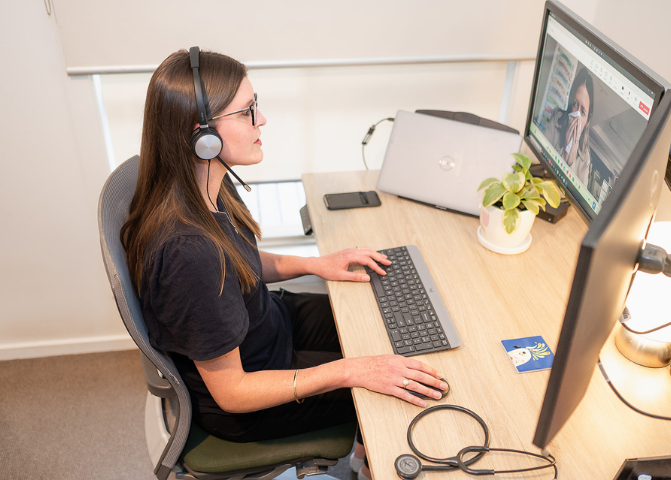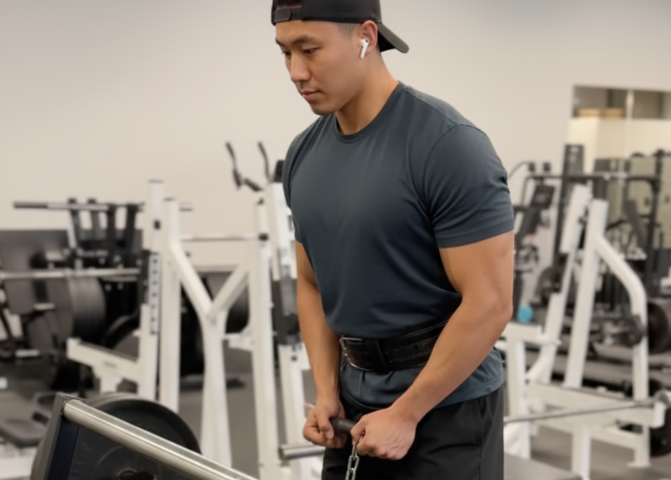27/04/2025
Should You Book a Telehealth Appointment or See Your GP? Here’s How to Decide
In today’s fast-paced world, getting medical advice quickly and conveniently has never been easier. For many Australians, particularly busy 30-somethings balancing careers, families, fitness, and everything in between, telehealth has become a game-changer.
Online doctors now offer expert medical advice 365 days a year, providing peace of mind when traditional, in-person GP appointments aren’t immediately available. But while telehealth opens doors for faster care, it’s important to know its limits.
So how do you know when a telehealth consultation is enough — and when you should be seeing your GP face-to-face? Let’s break it down.
The Power of Telehealth: Immediate Access to Expert Care
Gone are the days when you had to wait days (or even weeks) to see a doctor about a relatively simple issue. Telehealth provides instant access to qualified, Australian-registered doctors who can:
Offer medical advice
Diagnose minor illnesses
Prescribe medications
Issue medical certificates
Coordinate referrals to specialists or imaging services
For many common, non-urgent conditions, telehealth consultations are more than enough. Conditions like:
Mild infections (e.g., UTIs, sinusitis)
Prescription renewals
Minor skin conditions
Mental health support and care plans
Sexual health screenings
Medical certificates for short-term illnesses
can all be safely managed through an online consultation.
Telehealth is an excellent “first port of call” when you’re unsure whether your symptoms are serious. Online doctors can triage your case — meaning they can use their medical knowledge to decide whether your condition can be managed at home, needs a GP follow-up, or requires immediate emergency care.
But Telehealth Has Its Limits
As convenient and accessible as telehealth is, it can’t replace the power of a hands-on, physical examination when it’s needed. Certain symptoms and health issues require more detailed assessment, investigation, or even immediate hospital care.
You should seek an in-person GP appointment (or head straight to emergency) if you experience:
Chest pain or tightness
Severe shortness of breath
Persistent vomiting or dehydration
Sudden, severe headaches (especially if different from your usual migraines)
Significant abdominal pain
New neurological symptoms (e.g., weakness, numbness, confusion)
Bleeding that won’t stop
Suspected fractures or serious injuries
Unexplained lumps or bumps
Severe mental health distress
In these cases, no online doctor — no matter how skilled — can fully assess you without a physical examination, diagnostic tests (like blood tests, imaging), or hands-on care.
How Online Doctors Support You in Serious Situations
Importantly, telehealth doesn’t just leave you to figure things out on your own. A good online doctor knows the boundaries of what can (and can’t) be done via telehealth.
They can:
Assess your symptoms carefully through structured questioning
Identify red flags that suggest more serious illness
Recommend home care for mild issues
Direct you quickly to your GP, urgent care clinic, or emergency department if needed
Coordinate referrals (e.g., imaging, blood tests) so you can fast-track in-person investigations
In short: even if your telehealth appointment ends with “You need to be seen in person,” it has still provided expert triage that saves you precious time — and sometimes, makes all the difference in getting the right care fast.
The Importance of Ongoing Care with Your Local GP
While telehealth services are incredibly valuable, they’re not designed to replace your GP.
Your GP plays a critical role in:
Chronic disease management (e.g., diabetes, asthma, heart disease)
Preventative care (e.g., cervical screenings, blood pressure monitoring, vaccinations)
Comprehensive mental health support
Managing complex or recurring health issues
Referrals to specialists for long-term care
Building a trusting, long-term relationship with a GP ensures your health history is known, your risks are monitored, and your overall wellness is supported over time.
Best practice? Use telehealth to complement, not replace, your local GP. Think of your online doctor as an extra support when timing or location makes seeing your usual GP difficult.
How to Incorporate Online Doctors into Your Care Team
Smart healthcare today is about having a team — not relying on a single option.
Here’s how to make telehealth work for you:
Use telehealth for immediate needs when you can’t get a timely GP appointment.
Update your GP afterwards if an online doctor prescribes medications, diagnoses a new condition, or refers you to investigations.
Keep records of any online consultations for continuity of care.
Still attend regular checkups with your local GP — especially if you have ongoing medical issues.
Have a health plan for emergencies: know when telehealth is appropriate and when to head straight to the emergency department.
Choosing the Right Telehealth Service in Australia
With so many online doctor services now available, it’s important to choose one that prioritises quality, safety, and coordination of care.
When choosing a platform, always check:
Are the doctors Australian-registered?
- Is the platform following Australian Health Care Practitioner Guidelines?
Does the service offer follow-up pathways if needed?
Do they have transparent pricing?
Are they upfront about when in-person care is necessary?
Medmate is a standout for many Australians looking for caring, affordable, and medically-led online care. Available 365 days a year, Medmate’s doctors offer consultations that focus on both immediate care and seamless coordination with local GPs and hospitals when needed. They understand that telehealth isn’t about cutting corners — it’s about providing the right care at the right time, with real compassion. Plus, they also offer medication home delivery, adding an extra layer of convenience.
Final Thoughts: Balance is Key
Telehealth has revolutionised healthcare access in Australia, giving busy people — especially those in their 30s — a smart, fast way to get expert advice whenever they need it.
But like all good things, it’s about balance.
Know when telehealth is enough — and know when your health needs a hands-on approach with your trusted GP or local hospital.
By incorporating a quality telehealth provider like Medmate into your healthcare team, you create a flexible, modern approach to health — without sacrificing the personal, in-depth care that only face-to-face relationships with your GP can provide.
In a busy life, your health should always be accessible, cared for, and well-supported — every day of the year.
Recommended reading
Search for a specific topic or filter by categories to find information on what you need to know on the full Medmate Journal


The Belt Squat RDL is a Game-Changer
Looking to build a stronger, more powerful lower body while minimizing risk? The Belt Squat RDL might just be the exercise you’ve been missing. This unique movement, often overlooked, offers…
